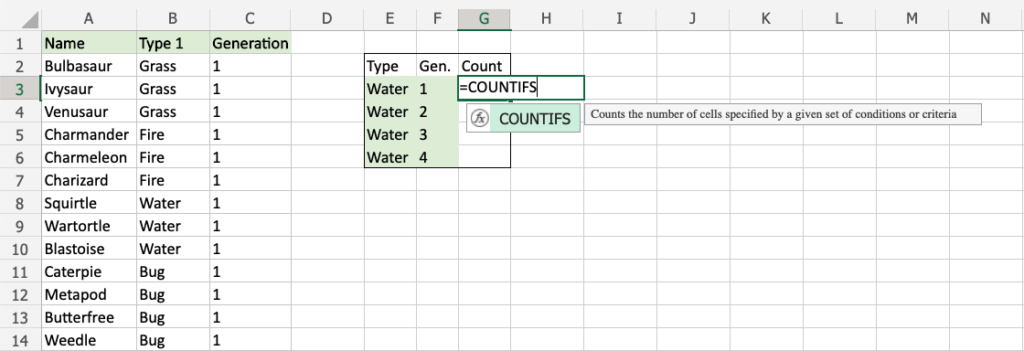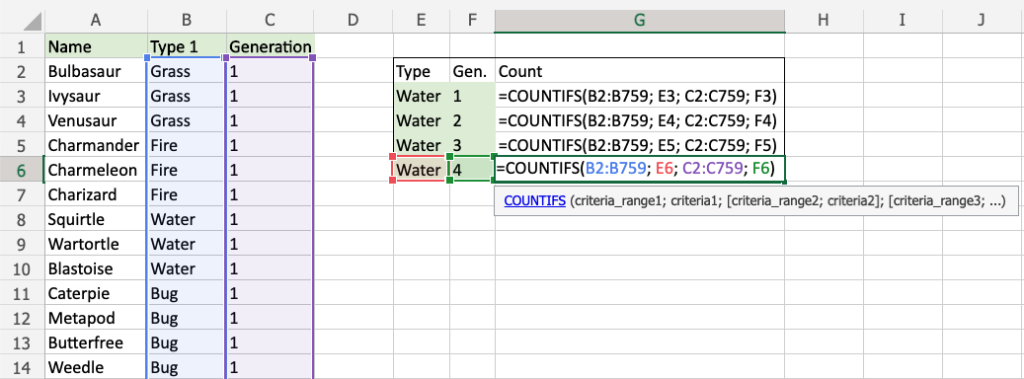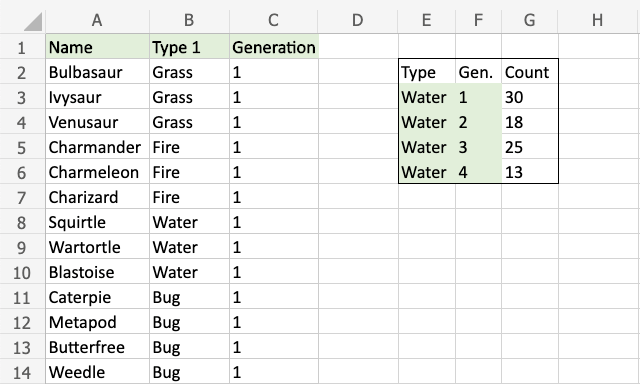COUNTIFS
Excel COUNTIFS Function
A pre-made Excel function called COUNTIFS counts the cells in a range according to one or more true or false conditions.
It is typed =COUNTIFS:
=COUNTIFS(criteria_range1, criteria1, [criteria_range2, criteria2], ...)
The conditions are referred to as critera1, criteria2, .. and so on, which can check things like:
- If a number is greater than another number >
- If a number is smaller than another number <
- If a number or text is equal to something =
The criteria_range1, criteria_range2, and so on, are the ranges where the function check for the conditions.
Note: A symbol, such as a , or ; is used to separate the various components of the function;
The symbol is determined by your language preferences.
Example COUNTIFS function
Determine the quantity of Water-type Pokemon from the first generation:
The requirements are “Water” as the type and “1” as the generation.

Note: Row 14 is the beginning of the whole dataset, which ends at row 759.
Example COUNTIFS function, step by step:
- Select the cell G3
- Type =COUNTIFS
- Double click the COUNTIFS command

4. Specify the range for the type B2:B759 (the Type 1 values)
5. Type ,
6. Specify the criteria (the cell E3, which has the value “Water”)
7.Type ,
8. Specify the range for the second condition C2:C759 (the Generation values)
9. Type ,
10. Specify the criteria (the cell F3, which has the value “1“)
11. Hit enter
Note: Before pressing enter, repeat steps 7–10 to add more conditions.

The first generation Water type Pokemon are now counted by the function.
To compare the Water type Pokemon from the following Generations, the function can be repeated:

Note: For the remaining rows, you can use the filling function; however, you must use absolute references for the ranges.
The entire number of Pokemon of the Water type found in Generations 1-4 is now visible:

